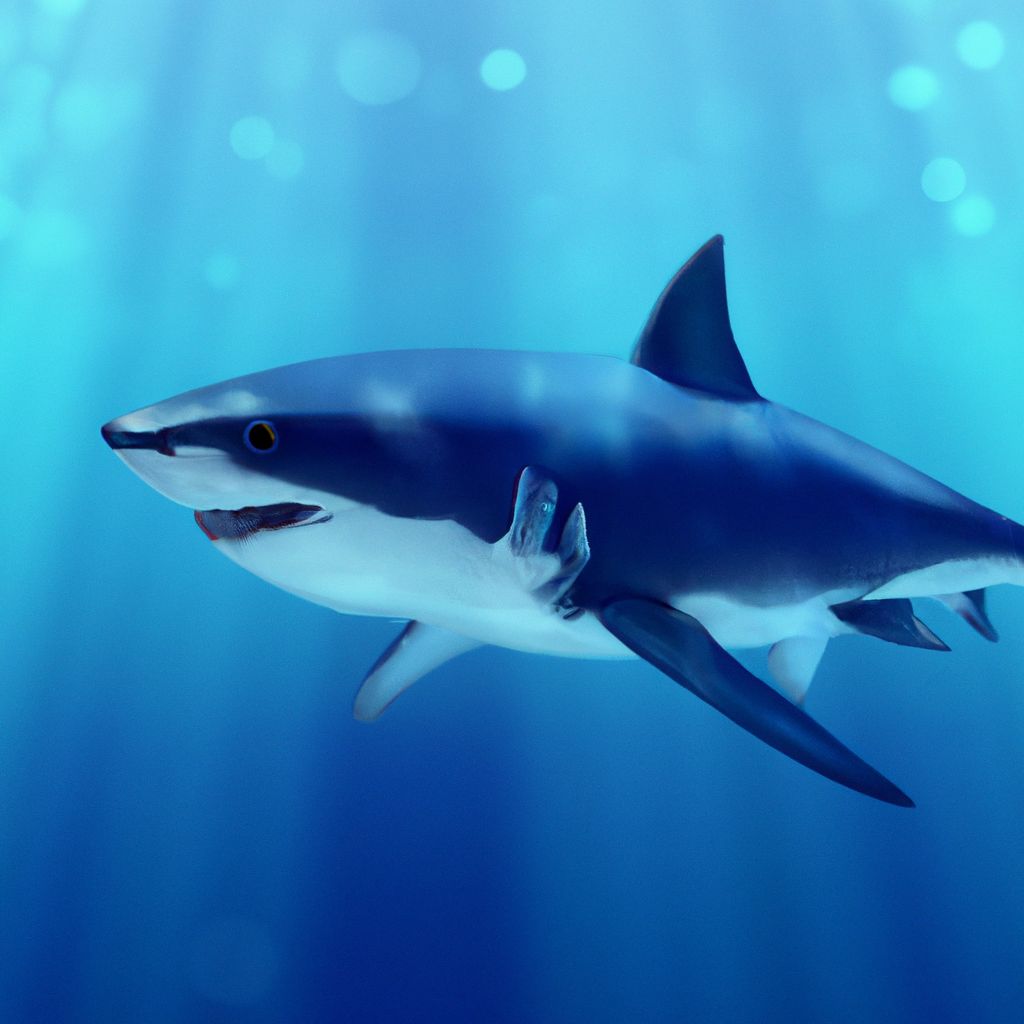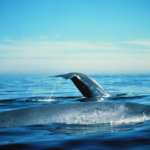
Carcharodon carcharias, better known as great white sharks, are marine creatures that have fascinated both researchers and observers. Found in various parts of the world, including New Zealand, these apex predators possess power, agility, and beauty.
They have a torpedo-shaped body and sharp teeth. They are the largest predatory fish on the planet with an exceptional hunting prowess. Plus, they can swim at speeds up to 35 miles per hour! Their acute sense of smell allows them to detect even faint blood traces from miles away.
New Zealand’s coastal waters provide an ideal habitat for great whites. It has diverse marine ecosystems with plenty of prey, such as seals and sea lions. The relatively cooler temperatures create a favorable environment for them.
Key Takeaways
- Great white sharks are a relatively common sight in New Zealand waters, particularly around the South Island.
- The population of great white sharks in New Zealand is believed to be stable, but more research is needed to fully understand their numbers and behavior.
- Great white sharks play a crucial role in maintaining the balance of marine ecosystems by controlling the populations of other marine species.
- Despite their fearsome reputation, great white sharks are not typically a threat to humans and attacks are extremely rare.
- Conservation efforts are underway in New Zealand to protect great white sharks and their habitats, including the establishment of marine reserves and stricter fishing regulations.
- It is important for the public to be educated about great white sharks and to understand the importance of their conservation for the overall health of the marine environment.
- Researchers are using advanced technology, such as satellite tagging, to track the movements and behavior of great white sharks in New Zealand waters, providing valuable insights into their habits and migration patterns.
- The presence of great white sharks in New Zealand waters offers unique opportunities for eco-tourism, with responsible and sustainable shark-watching activities becoming increasingly popular.
- Continued research and monitoring of great white sharks in New Zealand will help inform conservation efforts and ensure the long-term survival of this iconic species.
Physical Description of Great White Sharks

Great White Sharks are renowned for their intimidating presence in the ocean. They can reach up to 20 feet (6 meters) long. With 300 razor-sharp teeth arranged in multiple rows, they’re perfectly equipped for hunting and tearing through prey.
Their upper body is a grayish-blue hue, which serves as camouflage. This allows them to blend into the water and become difficult to spot. Additionally, they have a prominent dorsal fin that sticks out of the water’s surface. This helps with stabilization, as well as identification.
What makes them truly unique is their ability to regulate their body temperature, even though they’re ectothermic creatures. This is done through a special circulatory system called countercurrent exchange. This allows them to hunt efficiently in cold waters.
Distribution and Habitat of Great White Sharks in New Zealand

The distribution and habitat of Great White Sharks in New Zealand is an interesting topic to explore. These majestic creatures can be found in the coastal waters of New Zealand, making it a great spot for shark lovers and researchers.
Let’s look at some key factors:
| Factors | Distribution |
|---|---|
| Region | New Zealand |
| Depth Range | Shallow to Deep Waters |
| Food Source | Seals, Fish, Whales |
Great White Sharks in New Zealand inhabit both shallow and deep waters. They have been seen near the coast as well as further out. They can explore various ecosystems and find different prey.
Their food sources mainly include seals and fish. But there have also been cases of them scavenging whales. This shows their ability to survive in different environments.
Let’s take a look at a thrilling story that further shows the greatness of Great White Sharks in New Zealand.
Recently, researchers had a chance to observe a Great White Shark hunting near Kaikoura. They saw its incredible speed and agility as it jumped out of the water to catch its prey. This experience gave them valuable understanding into the hunting habits of these amazing creatures.
Great White Sharks in New Zealand are pros at fine dining – they like their meals with a side of fear!
Feeding Habits of Great White Sharks
Great White Sharks are notorious predators with unique feeding habits. They have a varied diet of seals, sea lions, dolphins, and marine mammals. They also scavenge on dead animals if the chance arises.
Here’s a summary of their feeding habits:
| Feeding Habit | Diet |
|---|---|
| Prey Selection | Seals, sea lions, dolphins, marine mammals |
| Opportunistic | Scavenging on dead animals |
These amazing creatures surprise their prey with their speed and agility. And their sharp teeth make it easier for them to tear apart their victims.
It’s clear that Great White Sharks play an important role in maintaining the balance of marine ecosystems. They’re here to remind us that humans aren’t always at the top of the food chain!
Population and Conservation Status of Great White Sharks in New Zealand
The population and conservation status of Great White Sharks in New Zealand is a topic of great significance. They are an iconic species, with an estimated population size of 200-300 individuals.
These creatures reside in coastal areas and feed on prey. Unfortunately, their conservation status is classified as vulnerable.
It is critical to understand that these majestic predators are apex predators. This means they control the balance of the food chain in the marine ecosystem, and their presence is indicative of a healthy environment.
A study conducted by the Department of Conservation (DOC) revealed that overfishing is a major contributing factor to the decline in Great White Shark numbers.
To stay safe from a shark attack in New Zealand, it’s best to remain on land. That way, the only thing you have to worry about is tripping over a hobbit!
Interactions with Humans: Shark Attacks and Safety Measures
Shark Attacks and Safety Measures are key to consider with Great White Sharks and humans. Here are three points to keep in mind:
- Firstly, shark attacks on humans are rare. A few incidents have been reported in New Zealand, however the risk is low. It’s best not to blow this out of proportion and focus on educating the public about safety.
- Secondly, safety measures can lower the chances of shark attacks. This includes signage at beaches with shark activity, staying close to shore and knowing where feeding grounds and migration routes are. This way, potential risks can be minimized.
- Thirdly, human activities affect Great White Sharks. Pollution, overfishing, and habitat destruction impact their food sources and migration patterns. This knowledge is important for researchers and policy-makers to create conservation strategies with a balance between human interests and marine ecosystems.
Research and Conservation Efforts for Great White Sharks in New Zealand
Research and conservation efforts for Great White Sharks in New Zealand are focused on collecting data, raising public awareness, and taking steps to protect this iconic species. The goal is to make sure these sharks survive long-term and keep the marine ecosystem balanced.
Researchers use advanced tracking tech such as satellite tags and acoustic monitoring devices to get valuable data on the movements and migrations of these apex predators.
- Promote responsible eco-tourism to give economic incentives to local communities and raise awareness of the importance of protecting the sharks.
- Engage fishing industries through educational programs to reduce accidental capture of Great White Sharks.
- Establish strict regulations on shark finning and practice sustainable fishing.
By implementing these suggestions, stakeholders can work together to protect the future of Great White Sharks in New Zealand waters. Through continuous research, public engagement, and efficient conservation measures, we can preserve this magnificent species for generations.
Frequently Asked Questions
1. Are great white sharks common in New Zealand waters?
Yes, great white sharks are commonly found in New Zealand waters. They are known to inhabit coastal regions of both the North and South Islands.
2. Are great white sharks dangerous to humans?
While great white sharks are a top predator in the ocean, they rarely pose a threat to humans. Shark attacks in New Zealand are extremely rare, and most encounters with these sharks are peaceful.
3. Can you go cage diving with great white sharks in New Zealand?
Yes, there are several operators that offer cage diving experiences with great white sharks in New Zealand. These tours allow you to observe these magnificent creatures up close, while safely protected in a cage.
4. What is the best time of year to spot great white sharks in New Zealand?
The best time of year to spot great white sharks in New Zealand is during the summer months of December to February. This is when the waters are warmer, and shark sightings are more common.
5. How long can great white sharks grow?
Great white sharks can grow up to an average length of 15 to 20 feet, with some individuals reaching even larger sizes. Females tend to be larger than males.
6. How can we help protect great white sharks in New Zealand?
There are several ways you can help protect great white sharks in New Zealand. Supporting conservation organizations, spreading awareness about these magnificent creatures, and advocating for responsible fishing practices are all important steps towards their conservation.
Conclusion
In the depths of New Zealand’s waters prowls the great white shark. Its existence shows us the incredible biodiversity of our oceans. We must preserve these magnificent creatures and their habitats.
As we probe the life of the great white shark in New Zealand, we find out about its behavior and habitat. This awe-inspiring predator is feared and admired. It swims the vast ocean in quest of its next meal. Its strength and hunting abilities make it a force to be reckoned with. It shows us the wellness of our marine environment.
References
Shark – Migration, Socialization, Hunting | Britannica
Drone shows great white sharks swimming under surfers – BBC News




